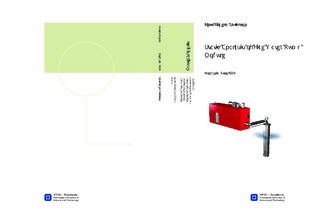Static Analysis of Fire Water Pump Module
Master thesis
Permanent lenke
http://hdl.handle.net/11250/237127Utgivelsesdato
2012Metadata
Vis full innførselSamlinger
Sammendrag
This thesis is based on a project from the previous semester (fall 2011) and initiated by Sigve Gjerstad at Frank Mohn Flato y AS. The thesis introduces the FWP system and different aspects regarding a static analysis of it's main component; The FWP Module. It takes a brief look at different meshing techniques and other choices that needs to be made in the early stages of an analysis. A series of simple analyses are carried out to show how shell elements are the best representation for a plate structure subjected to pressure. A series of simplified blast load analyses are presented where different choices within the Finite Element Method are compared. It's concluded that it is sufficient to consider only one of the two load steps to get the maximum values of stress and deformation. This saves us computation time with no loss of accuracy. The analyses also conclude that a blast load analysis is dependant on a non-linear material model to get reasonable result. A linear material model assumes stress is proportional to strain, even beyond the yield strength. This results in unrealistic high stresses. Implicit solver versus explicit solver are compared in the case of blast loading, which is a problem that requires short time increments. It is clear that the results are similar, however the computational cost is much higher for the implicit solver. It is also shown that stainless steel is more beneficial than structural steel in blast load scenarios. Finally, model simplification is studied as yet another way to decrease the computation time. This implies simplifying solid models with a mid-surface features, representing the model with shells
